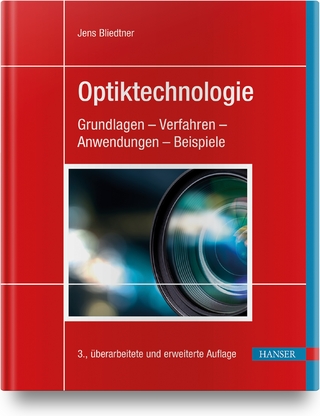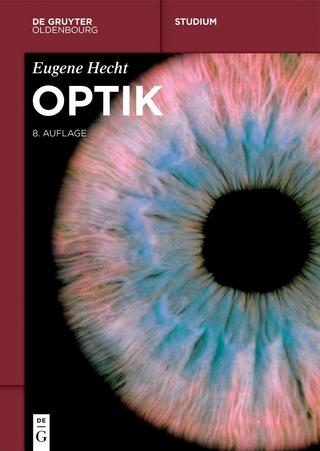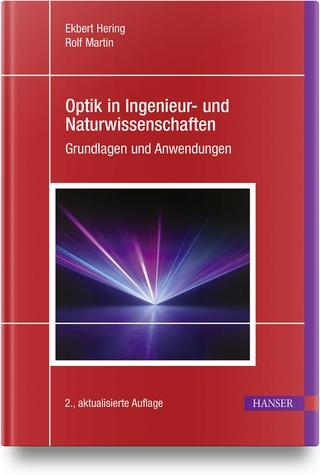
Electron Energy-Loss Spectroscopy in the Electron Microscope
Kluwer Academic / Plenum Publishers (Verlag)
978-0-306-42158-7 (ISBN)
- Titel ist leider vergriffen;
keine Neuauflage - Artikel merken
Chapter 2 deals with instrumentation and experimental technique, and should con- tain material of interest to researchers who want to get the best performance out of commercial equipment as well as those who contemplate building their own spectrometer or electron-detection system. Chapter 3 outlines the theory used to interpret spectral features, while Chapter 4 gives procedures for numerical processing of the energy-loss spectrum. Chapter 5 contains examples of practical applications of EELS and a discussion of radiation damage, spatial resolution, and detection limits.
1. An Introduction to Electron Energy-Loss Spectroscopy.- 1.1 Interaction of Fast Electrons with a Solid.- 1.2. The Electron Energy-Loss Spectrum.- 1.3. The Development of Experimental Techniques.- 1.4. Comparison of Analytical Methods.- 1.4.1. Ion-Beam Methods.- 1.4.2. Incident Photons.- 1.4.3. Electron-Beam Techniques.- 1.5. Further Reading.- 2. Instrumentation for Energy-Loss Spectroscopy.- 2.1. Energy-Analyzing and Energy-Selecting Systems.- 2.1.1. The Magnetic-Prism Spectrometer.- 2.1.2. Energy-Selecting Magnetic-Prism Devices.- 2.1.3. The Wien Filter.- 2.1.4. Cylindrical-Lens Analyzers.- 2.1.5. Retarding-Field Analyzers.- 2.1.6. Electron Monochromators.- 2.2. The Magnetic-Prism Spectrometer.- 2.2.1. First-Order Properties.- 2.2.2. Higher-Order Focusing.- 2.2.3. Design of an Aberration-Corrected Spectrometer.- 2.2.4. Practical Considerations.- 2.2.5. Alignment and Adjustment of the Spectrometer.- 2.3. The Use of Prespectrometer Lenses.- 2.3.1. Basic Principles.- 2.3.2. CTEM with Projector Lens On.- 2.3.3. CTEM with Projector Lens Off.- 2.3.4. Spectrometer-Specimen Coupling in a High-Resolution STEM.- 2.4. Recording the Energy-Loss Spectrum.- 2.4.1. Serial Acquisition.- 2.4.2. Electron Detectors for Serial Recording.- 2.4.3. Scanning the Energy-Loss Spectrum.- 2.4.4. Signal Processing and Storage.- 2.4.5. Noise Performance of a Serial Detector.- 2.4.6. Parallel-Recording Detectors.- 2.4.7. Direct Exposure of a Diode-Array Detector.- 2.4.8. Indirect Exposure of a Diode Array.- 2.4.9. Removal of Diode-Array Artifacts.- 2.5. Energy-Filtered Imaging.- 2.5.1. Elemental Mapping.- 2.5.2. Z-Contrast Imaging.- 3. Electron Scattering Theory.- 3.1. Elastic Scattering.- 3.1.1. General Formulas.- 3.1.2. Atomic Models.- 3.1.3. Diffraction Effects.- 3.1.4. Electron Channeling.- 3.1.5. Phonon Scattering.- 3.2. Inelastic Scattering.- 3.2.1. Atomic Models.- 3.2.2. Bethe Theory.- 3.2.3. Dielectric Formulation.- 3.2.4. Solid-State Effects.- 3.3. Excitation of Outer-Shell Electrons.- 3.3.1. Volume Plasmons.- 3.3.2. Single-Electron Excitation.- 3.3.3. Excitons.- 3.3.4. Radiation Losses.- 3.3.5. Surface Plasmons.- 3.3.6. Single, Plural, and Multiple Scattering.- 3.4. Inner-Shell Excitation.- 3.4.1. Generalized Oscillator Strength.- 3.4.2. Kinematics of Scattering.- 3.4.3. Ionization Cross Sections.- 3.5. The Spectral Background to Inner-Shell Edges.- 3.6. The Structure of Inner-Shell Edges.- 3.6.1. Basic Edge Shapes.- 3.6.2. Chemical Shifts in Threshold Energy.- 3.6.3. Near-Edge Fine Structure (ELNES).- 3.6.4. Extended Energy-Loss Fine Structure (EXELFS).- 4. Quantitative Analysis of the Energy-Loss Spectrum.- 4.1. Removal of Plural Scattering from the Low-Loss Region.- 4.1.1. Fourier-Log Deconvolution.- 4.1.2. Approximate Methods.- 4.1.3. Angular-Dependent Deconvolution.- 4.2. Kramers-Kronig Analysis.- 4.3. Removal of Plural Scattering from Inner-Shell Edges.- 4.3.1. Fourier-Log Deconvolution.- 4.3.2. Fourier-Ratio Method.- 4.3.3. Van Cittert'1. An Introduction to Electron Energy-Loss Spectroscopy.- 1.1 Interaction of Fast Electrons with a Solid.- 1.2. The Electron Energy-Loss Spectrum.- 1.3. The Development of Experimental Techniques.- 1.4. Comparison of Analytical Methods.- 1.4.1. Ion-Beam Methods.- 1.4.2. Incident Photons.- 1.4.3. Electron-Beam Techniques.- 1.5. Further Reading.- 2. Instrumentation for Energy-Loss Spectroscopy.- 2.1. Energy-Analyzing and Energy-Selecting Systems.- 2.1.1. The Magnetic-Prism Spectrometer.- 2.1.2. Energy-Selecting Magnetic-Prism Devices.- 2.1.3. The Wien Filter.- 2.1.4. Cylindrical-Lens Analyzers.- 2.1.5. Retarding-Field Analyzers.- 2.1.6. Electron Monochromators.- 2.2. The Magnetic-Prism Spectrometer.- 2.2.1. First-Order Properties.- 2.2.2. Higher-Order Focusing.- 2.2.3. Design of an Aberration-Corrected Spectrometer.- 2.2.4. Practical Considerations.- 2.2.5. Alignment and Adjustment of the Spectrometer.- 2.3. The Use of Prespectrometer Lenses.- 2.3.1. Basic Principles.- 2.3.2. CTEM with Projector Lens On.- 2.3.3. CTEM with Projector Lens Off.- 2.3.4. Spectrometer-Specimen Coupling in a High-Resolution STEM.- 2.4. Recording the Energy-Loss Spectrum.- 2.4.1. Serial Acquisition.- 2.4.2. Electron Detectors for Serial Recording.- 2.4.3. Scanning the Energy-Loss Spectrum.- 2.4.4. Signal Processing and Storage.- 2.4.5. Noise Performance of a Serial Detector.- 2.4.6. Parallel-Recording Detectors.- 2.4.7. Direct Exposure of a Diode-Array Detector.- 2.4.8. Indirect Exposure of a Diode Array.- 2.4.9. Removal of Diode-Array Artifacts.- 2.5. Energy-Filtered Imaging.- 2.5.1. Elemental Mapping.- 2.5.2. Z-Contrast Imaging.- 3. Electron Scattering Theory.- 3.1. Elastic Scattering.- 3.1.1. General Formulas.- 3.1.2. Atomic Models.- 3.1.3. Diffraction Effects.- 3.1.4. Electron Channeling.- 3.1.5. Phonon Scattering.- 3.2. Inelastic Scattering.- 3.2.1. Atomic Models.- 3.2.2. Bethe Theory.- 3.2.3. Dielectric Formulation.- 3.2.4. Solid-State Effects.- 3.3. Excitation of Outer-Shell Electrons.- 3.3.1. Volume Plasmons.- 3.3.2. Single-Electron Excitation.- 3.3.3. Excitons.- 3.3.4. Radiation Losses.- 3.3.5. Surface Plasmons.- 3.3.6. Single, Plural, and Multiple Scattering.- 3.4. Inner-Shell Excitation.- 3.4.1. Generalized Oscillator Strength.- 3.4.2. Kinematics of Scattering.- 3.4.3. Ionization Cross Sections.- 3.5. The Spectral Background to Inner-Shell Edges.- 3.6. The Structure of Inner-Shell Edges.- 3.6.1. Basic Edge Shapes.- 3.6.2. Chemical Shifts in Threshold Energy.- 3.6.3. Near-Edge Fine Structure (ELNES).- 3.6.4. Extended Energy-Loss Fine Structure (EXELFS).- 4. Quantitative Analysis of the Energy-Loss Spectrum.- 4.1. Removal of Plural Scattering from the Low-Loss Region.- 4.1.1. Fourier-Log Deconvolution.- 4.1.2. Approximate Methods.- 4.1.3. Angular-Dependent Deconvolution.- 4.2. Kramers-Kronig Analysis.- 4.3. Removal of Plural Scattering from Inner-Shell Edges.- 4.3.1. Fourier-Log Deconvolution.- 4.3.2. Fourier-Ratio Method.- 4.3.3. Van Cittert's Method.- 4.3.4. Effect of a Collection Aperture.- 4.4. Background Fitting to Ionization Edges.- 4.4.1. Energy Dependence of the Background.- 4.4.2. Background-Fitting Procedures.- 4.4.3. Background-Subtraction Errors.- 4.5. Elemental Analysis Using Inner-Shell Edges.- 4.5.1. Basic Formulas.- 4.5.2. Correction for Incident-Beam Convergence.- 4.5.3. Effect of Sample Orientation.- 4.5.4. Effect of Specimen Thickness.- 4.5.5. Choice of Collection Angle.- 4.5.6. Choice of Integration and Fitting Regions.- 4.5.7. Microanalysis Software.- 4.5.8. Calculation of Partial Cross Sections.- 4.6. Analysis of Extended Energy-Loss Fine Structure.- 4.6.1. Spectrum Acquisition.- 4.6.2. Fourier-Transform Method of Data Analysis.- 4.6.3. Curve-Fitting Procedure.- 5. Applications of Energy-Loss Spectroscopy.- 5.1. Measurement of Specimen Thickness.- 5.1.1. Measurement of Absolute Thickness.- 5.1.2. Sum-Rule Methods.- 5.2. Low-Loss Spectroscopy.- 5.2.1. Phase Identification.- 5.2.2. Measurement of Alloy Composition.- 5.2.3. Detection of Hydrogen and Helium.- 5.2.4. Zero-Loss Images.- 5.2.5. Z-contrast Images.- 5.2.6. Plasmon-Loss Images.- 5.3. Core-Loss Microanalysis.- 5.3.1. Choice of Specimen Thickness and Incident Energy.- 5.3.2. Specimen Preparation.- 5.3.3. Elemental Detection and Mapping.- 5.3.4. Quantitative Microanalysis.- 5.3.5. Measurement and Control of Radiation Damage.- 5.4. Spatial Resolution and Elemental Detection Limits.- 5.4.1. Electron-Optical Considerations.- 5.4.2. Loss of Resolution due to Electron Scattering.- 5.4.3. Statistical Limitations.- 5.4.4. Localization of Inelastic Scattering.- 5.5. Structural Information from EELS.- 5.5.1. Low-Loss Fine Structure.- 5.5.2. Orientation Dependence of Core-Loss Edges.- 5.5.3. Core-Loss Diffraction Patterns.- 5.5.4. Near-Edge Fine Structure.- 5.5.5. Extended Fine Structure.- 5.5.6. Electron-Compton Measurements.- Appendix A. Relativistic Bethe Theory.- Appendix B. FORTRAN Programs.- B.3. Incident-Convergence Correction.- B.4. Fourier-Log Deconvolution.- B.5. Kramers-Kronig Transformation.- Appendix C. Plasmon Energies of Some Elements and Compounds.- Appendix D. Inner-Shell Binding Energies and Edge Shapes.- Appendix E. Electron Wavelengths and Relativistic Factors; Fundamental Constants.- References.
| Zusatzinfo | Illustrations |
|---|---|
| Verlagsort | Dordrecht |
| Sprache | englisch |
| Themenwelt | Naturwissenschaften ► Physik / Astronomie ► Optik |
| ISBN-10 | 0-306-42158-5 / 0306421585 |
| ISBN-13 | 978-0-306-42158-7 / 9780306421587 |
| Zustand | Neuware |
| Haben Sie eine Frage zum Produkt? |
aus dem Bereich


